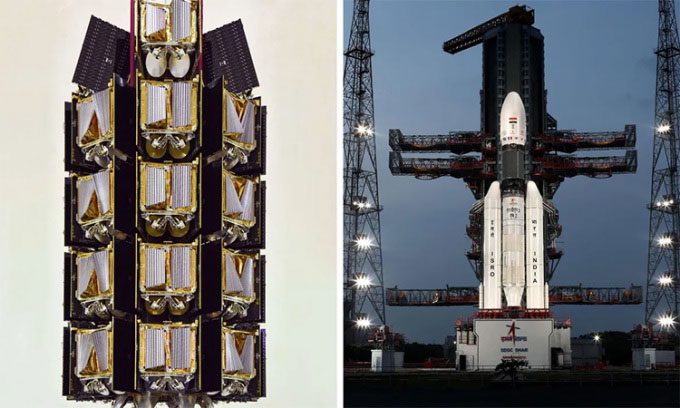India’s spacecraft carrying three astronauts will launch into a high orbit of 400 km for approximately three days before returning to Earth.
The Minister of Science and Technology of India announced that the first crewed spaceflight of India is scheduled to take place in the fourth quarter of 2024, as reported by Interesting Engineering on December 28. The mission aims to demonstrate human space travel capabilities by sending a three-member crew into an orbit 400 km high for three days, according to the Indian Space Research Organisation (ISRO).

India’s LVM3 M2 rocket. (Photo: Interesting Engineering)
The crewed spaceflight is named “Mission H1,” and is expected to launch using ISRO’s LVM3 rocket. The rocket has been modified to meet human requirements and is now referred to as the Human Rated LVM3. It includes a Crew Escape System (CES), powered by high-thrust solid engines, which can safely transport the crew in case of an emergency during launch or ascent.
The spacecraft consists of a Crew Module (CM) and a Service Module (SM), similar to NASA’s Orion spacecraft used in the Artemis I Moon mission. The CM is a habitable space, featuring a pressurized metal interior structure and an unpressurized exterior structure with a Thermal Protection System (TPS) designed to ensure the crew’s safe return to Earth. The CM will also contain life support systems, avionics, and deceleration systems, while the SM will house power systems, propulsion, avionics, and deployment mechanisms.
Prioritizing astronaut safety, experts plan to conduct two uncrewed test missions before H1 to evaluate the performance of the Crew Escape System and parachute deceleration system under various flight conditions.
The two uncrewed test missions, named G1 and G2, are scheduled to take place in the fourth quarter of 2023 and the second quarter of 2024, respectively. Meanwhile, Mission H1 is set for the fourth quarter of 2024. The three-member crew has been selected from the Indian Air Force and is currently undergoing specialized training in Bengaluru.


















































